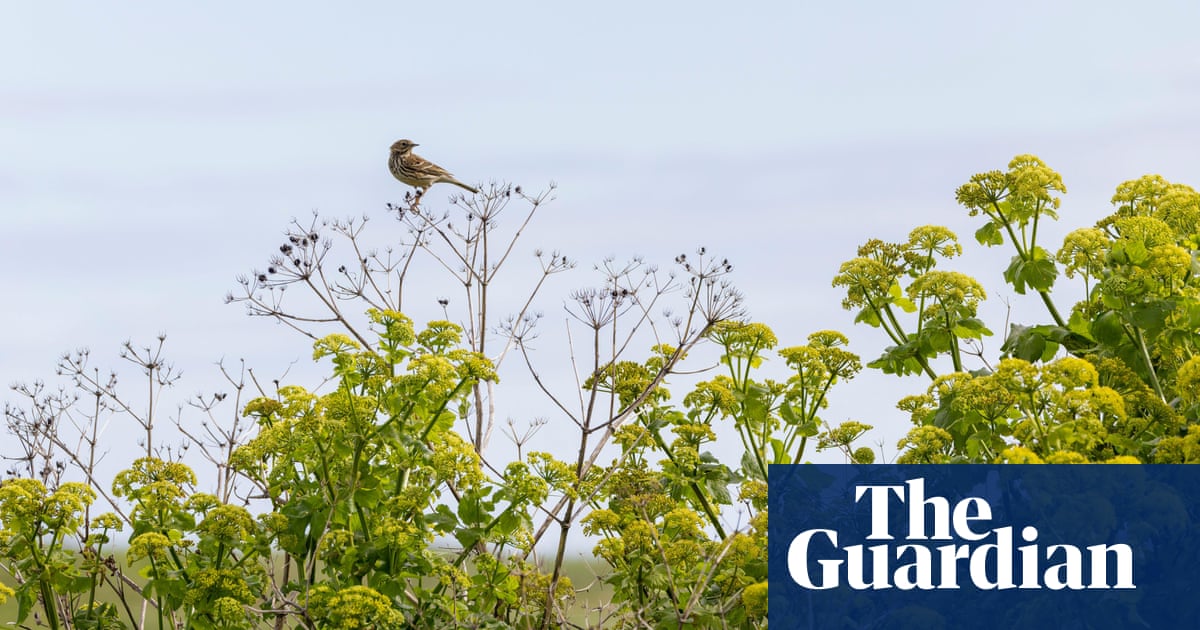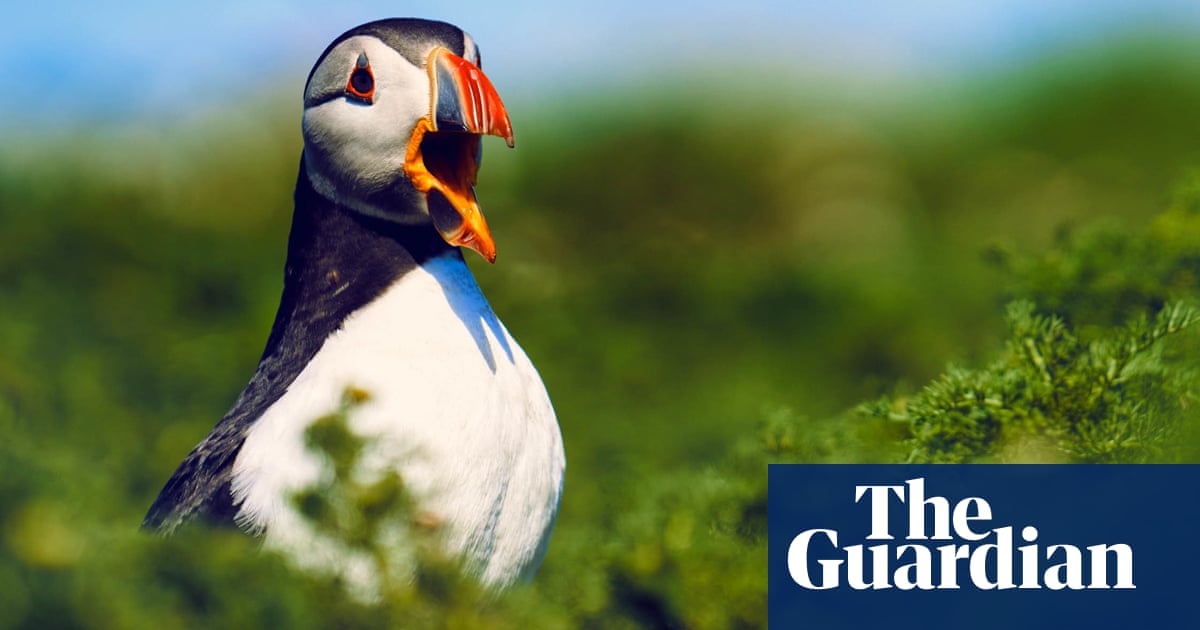
In an effort to develop my newly aquired garden as inexpensively and sustainably as possible, I am raising as many plants as I can from seed. Among the perennials I sowed last year – echinaceas, salvias, sea holly, calamint – I include a few wildflowers whose seed I had collected from local hedgerows: field scabious, teasel, white campion, wild carrot. These plants produced blooms this summer that were attractive and magnets for pollinators, including species of bee, beetle and hoverfly. No single action in the garden has felt as deeply rewarding.
Amid an intensifying biodiversity crisis in which insect species are in significant decline, it is heartening to see a growing appreciation for weeds and wildflowers – plants that pollinators rely on for forage and habitat. Many gardeners are now loosening tidiness, abandoning destructive pesticides and welcoming interlopers.
So seek out a handful of local, pollinator-bolstering wildflowers, collect their seed and plug them into your border, planter or window box. It is unlawful to remove plants from the wild, but collecting non-endangered wildflower seed for personal use is permitted; just be sensible in taking only a small measure, whether from hedgerow, park, woodland glade or coastal path.
During late summer and early autumn, snip seed heads that have noticeably browned, drop them into an envelope and store somewhere cool and dry. Allow a few weeks for seeds to further ripen before separating them from the seed capsule and sowing thinly into small pots or shallow seed trays filled with a light, peat-free compost mixed with a third sharp sand. Cover with a thin layer of compost, water gently and place on a sunny windowsill. Wildflower germination can be erratic, so keep moist and allow plenty of time for signs of life (it’s worth keeping some seed back for spring, too, as not all flowers will germinate in autumn). Plant seedlings out in the open once true leaves appear, keeping them free from competition while developing.
I guarantee you earthly joys in watching the wildlife they attract. Here are 10 of the best British wildflowers to look out for.
Plants for free-draining soils
Teasel (Dipsacus fullonum)
Wild teasel will be familiar from the side of the motorway, where its decorative, shoulder-high skeletons remain long after flowering. Teasel is biennial, so it will flower in its second year before setting seed once again. Shake the brittle, spiky seed heads to reveal a glut of little dark seeds – a popular food source for sparrows, linnets and goldfinches. It is best grown in little clusters or dotted among low perennials, adding an architectural layer to your planting and a nectar source for many moths and bumblebees.
Field scabious (Knautia arvensis)
Commonly seen along sunny hedgerows and in downland meadows, this purple-pink “pincushion” flower tops the list for pollinator appeal. A clump-forming perennial easily intermixed with garden staples such as cranesbill and lavender, it has branching, multiheaded, nectar-rich blooms that appeal to a great many insects, from peacock and comma butterflies to solitary bees and hawk moths. Deadhead spent blooms to encourage more flowers.
Wild carrot (Daucus carota)
Much like the earlier-flowering and similarly ubiquitous cow parsley, wild carrot (AKA Queen Anne’s lace) displays cream-white great domes and is regularly found on disused scrub and grassland. In the garden, wild carrot easily rivals popular umbels Selinum and Ammi majus, and is gorged on by red soldier beetles, which, rather handily, consume aphids. I grow it with blue nepeta and stake the flower-laden stems with hazel branches for support. Note: the foliage can cause skin irritation, so handle with gloves.
Plants for heavy or damp soils
Meadowsweet (Filipendula ulmaria)
I grew up addicted to the TCP-like fragrance of meadowsweet, which even now induces me to pinch their fluffy white plumes and breathe deeply. A herb of the damp meadow and woodland edge, meadowsweet makes a fantastic semi-shade perennial and can be grown from seeds easily collected in autumn. It is a popular resource for bees and hoverflies, and a food plant for numerous moths.
Alexanders (Smyrnium olusatrum)
This plump, lime-green umbelliferous biennial supports an abundance of insect life – more than 150 species have been recorded visiting its flowers – and has long been grown in kitchen gardens as a spicy herb. Out in the countryside it can be found along field edges, streams and woodland glades, although careful identification is key as it can be confused for other broadleaved umbels such as angelica and the poisonous hemlock water-dropwort.
Welsh poppy (Papaver cambricum)
A striking lemon-petalled perennial with a long flowering season, Welsh poppy is a superb garden flower, thriving on a range of soils including rich, damp sites in full or partial sunshine. Beloved of bumblebees, it can be found in woodland and cliff habitats, but is most commonly spotted growing from walls and urban waste ground. Snap off the papery seed heads, broadly scatter the tiny seeds directly on to garden soil and allow seedlings to pop up between existing planting.
Plants for coastal gardens
Foxglove (Digitalis purpurea)
The wild pink European foxglove of the coastal path, hedgerow and wood remains as popular a garden biennial as its many white, cream and peach cultivars, germinating easily from an abundance of seed – sprinkle just a pinch to avoid overcrowded seedlings. Watching honey and bumblebees waddle in and out of a foxglove’s multiple tubular flowers is a quintessential nature experience. Handle with care as all parts of the metre-high plant are poisonous.
White campion (Silene latifolia)
At home, the white campion I sowed last year has flowered prolifically. I chopped it back after the first flush and it sent up a second constellation of bright white stars. A favourite of butterflies and bees by day, the luminous flowers are particularly fragrant in the evenings, attracting moths including the marbled coronet and clover, and the sandy carpet. Seed spills easily from the brittle vase-like capsules of this immensely hardy perennial.
Viper’s bugloss (Echium vulgare)
So named for its snake-like appearance in flower and stem markings, viper’s bugloss has to rank among the most rewarding of all wildflowers to grow from seed. In late spring its knee-high vivid blue flowers are seen drifting along scrubby coastlines and drawing the likes of painted lady butterfly, six-spot burnet moth and all manner of bees – including the red mason – to its nectar-rich reserves. It is best germinated in a sand-heavy compost mix and then planted at the front of the border where, with luck, it will self-seed for future blooms.
The all-rounder
Herb Robert white/pink (Geranium robertianum)
I fell for the common herb Robert all over again last year, encountering the white variant of this prolific pink-flowered “weed” growing locally in Hampshire. A low-spreading, red-stemmed annual, it thrives on a range of soils, in and out of shade, and blooms for months – a great underplant for shrubs, or a brilliant pot or window box plant, attracting butterflies including my absolute favourite, the orange tip.
For more information on wildflower seed collection visit https://growwild.kew.org/championing-nature












